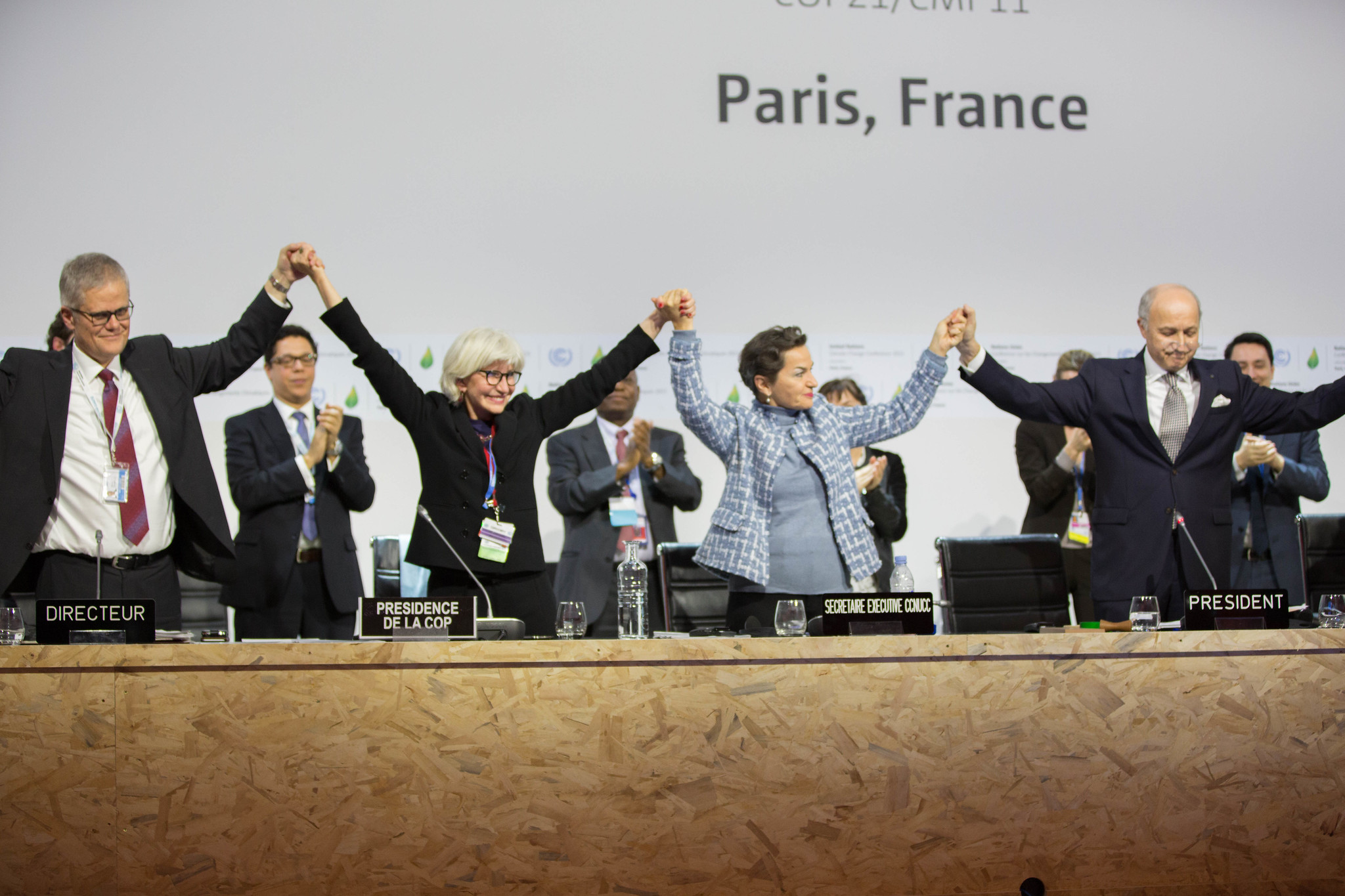
The Paris Agreement was widely celebrated as a major success when it was agreed under the United Nations Framework Convention on Climate Change (UNFCCC) in 2015. It offered a way out of the political impasse that had exposed deep dissatisfaction with the global climate architecture of the time. The agreement quickly entered into force – less than one year after adoption – and achieved near-universal participation with 195 parties, making it one of the most widely adopted international agreements to date. It set out three main goals: (1) limit global temperature rise to well below 2°C above pre-industrial levels, and pursue efforts to limit it to 1.5°C by achieving net-zero emissions in the second half of this century; (2) enhance adaptive capacity and resilience to climate impacts, including loss and damage; and (3) make finance flows consistent with a pathway towards low greenhouse gas emissions and climate-resilient development, including technology transfer and capacity building.
A decade later, however, the outlook is mixed. In 2024, global average temperature surpassed the 1.5°C threshold for the first time, despite more optimistic assessments made just a few years earlier. Current climate commitments have been projected to exceed the 2°C limit and to lead to a global temperature rise of around 3°C, while global emissions continue to increase. Although the goal of achieving US $100 billion in climate finance annually has finally been met – albeit with delays – climate finance flows from developed to developing countries remain insufficient and uncertain. Furthermore, the UNFCCC process is increasingly overwhelmed by an expanding agenda and the ever-growing size of the annual Conferences of the Parties (COPs).
The Paris Agreement secures institutional robustness through flexibility, but often at the expense of effectiveness.
This report analyses the implementation of the Paris Agreement 10 years after its inception. Specifically, it focuses on the functioning of the agreement's core mechanisms: (1) Nationally Determined Contributions (NDCs) and the Global Stocktake, (2) the Enhanced Transparency Framework (ETF), (3) mitigation pathways, (4) cooperation under Article 6, and (5) the UNFCCC’s financial mechanism.
The core idea of the Paris Agreement was that robust procedural rules, pledge-and-review mechanisms implemented via soft peer pressure, procedural obligations, transparency, and inclusion would catalyse deeper cooperation. This deliberate trade-off sustains its overall robustness – but often at the expense of effectiveness. The regime falls behind on delivering both substantive outcomes (ambitious NDCs effectively implemented) and procedural functionality (timely, transparent reporting and NDC submission). Resource constraints in terms of climate finance and capacity building, as well as strains on the UNFCCC Secretariat’s budget, further undermine the adequacy of support under the Paris Agreement, eroding trust and discouraging active participation.
As it enters its implementation phase, the Paris Agreement seems to be struggling to deliver on its promises. While a fresh agreement or counter-institution may seem appealing, entrenched divisions make such options unlikely. Rather, the Paris Agreement should be viewed as “the central node of the global climate regime,” driving cooperation and climate action across diverse forms of governance, including civil society, sub-national efforts, and other multilateral environmental agreements. Whether the Paris Agreement can adapt to these challenges will be the defining test of its second decade – and of the UNFCCC regime as a whole.
Key Findings:
- The Paris Agreement has achieved near-universal adoption and operationalised its institutional framework, but implementation reveals persistent ambition, equity, and outcome gaps.
- Its deliberate trade-off – robustness through flexible, procedural rules – has often undermined effectiveness.
- Global climate finance targets have been met on paper, but flows remain inadequate, delayed, and uncertain, eroding trust.
- The COP process has become overwhelmed by an expanding agenda and institutional strains, weakening delivery capacity.
- The defining test for the next decade is whether the Paris Agreement can adapt and catalyse meaningful climate action, or risk stagnation as a “zombie institution.”
Citation Recommenation: Kustova, Irina, Christian Dietz, Renske Van Hoof, and Jan Karlas. 2025. “The Paris Agreement Turns 10: Is It (Still) Delivering on Its Promises?” ENSURED Research Report, no. 11 (September): 1-51. https://www.ensuredeurope.eu.
*This report includes contributions by Franziska Petri and Katja Biedenkopf.







.png)
